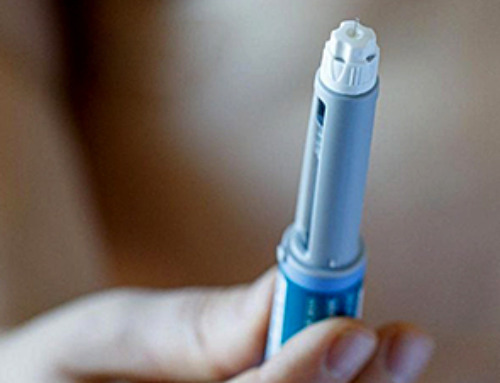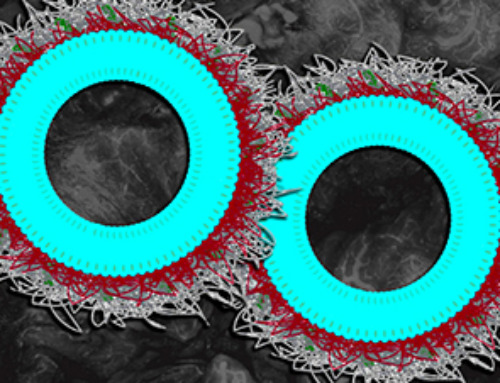Researchers discovered that people who don’t drink enough water react with sharper cortisol spikes during stressful events, explaining why poor hydration is tied to long-term health risks.
A recent study in the Journal of Applied Physiology examined the impact of hydration status and habitual fluid intake on saliva cortisol reactivity to psychosocial stress. Suboptimal hydration and habitual low fluid intake are associated with greater cortisol reactivity to acute psychosocial stress, which may adversely influence long-term health.
Hydration and cortisol reactivity to stress
Consistently drinking less than the recommended daily amount of water can lead to suboptimal hydration, often shown by darker, more concentrated urine and reduced output. Research has associated habitual low fluid intake with a greater metabolic, renal, and cardiovascular disease risk. Chronic low water intake may increase water-regulating hormones, such as arginine vasopressin (AVP), which can increase the release of the stress hormone cortisol.
It is well known that cortisol spikes during acute stress, but it also follows a daily rhythm. When this circadian rhythm is disrupted, or when cortisol responses are exaggerated, it can affect immunity, metabolism, and inflammation. Some research has found higher cortisol levels in people who are suboptimally hydrated and drink less than 1.2 L of fluid per day. However, the exact link between fluid intake, hydration, and cortisol remains uncertain.
About the study
Given the shared pathways between stress hormone cortisol release and whole-body water regulation, this study aimed to verify that individuals with suboptimal hydration and habitual low fluid intake show greater cortisol reactivity to acute psychosocial stress.
Eligible participants were non-smokers, healthy, aged 18–35 years, and free from any known immune, cardiovascular, sleep, or metabolic disorders. Individuals were identified as being habitually low or high fluid drinkers, i.e., LOW and HIGH, with thresholds being derived from a national database. In each group, there were 16 participants.
Over 7 days of screening, participants recorded their daily fluid intake from all sources daily, in pairs to account for potential confounders. Individuals who consumed excessive caffeine and alcohol were excluded from the sample. Participants were then prospectively monitored for 7 days while maintaining their typical fluid intake, making the study stronger than a one-off observational snapshot.
After the screening period, participants individually completed the Trier Social Stress Test (TSST). Later, saliva samples were collected and analyzed for cortisol. They also provided urine samples, which were used to assess urine osmolality and color (UOsm and UCol). Plasma samples were analyzed for copeptin as an additional hydration biomarker.
Study findings
The HIGH group consistently presented with lower UOsm, UCol, and plasma copeptin than the LOW group. However, the groups showed no statistical differences in thirst or plasma osmolality (POsm). Based on a UOsm threshold of 500 mosmol/kgH2O, 15 participants in the LOW group were suboptimally hydrated, and 14 of 16 participants in the HIGH group were hydrated on the morning of the TSST.
The TSST showed notable increases in heart rate and state anxiety; however, no significant interactions between the two variables were observed, indicating similar responses in the LOW and HIGH groups. A smaller proportion of individuals in the LOW group reported a meaningful increase in state anxiety. The LOW group also reported higher “baseline” saliva cortisol levels. However, after a standardized 25-minute seated rest, both groups showed similar saliva cortisol levels.
When “baseline cortisol” was entered as a covariate in the linear mixed models, the TSST elicited a significant increase in saliva cortisol. Saliva cortisol levels peaked post-TSST. Across the two groups, the number of individuals reporting a significant saliva cortisol response was similar.
The researchers also analyzed “responders,” whose cortisol or anxiety change exceeded normal day-to-day variation. Although the proportion of responders was similar in both groups, cortisol reactivity was consistently greater in LOW than in HIGH. However, there were some meaningful group-time interactions, whereby salivary cortisol increased significantly post-TSST only in the LOW group. Cortisol reactivity was lower in the HIGH group, which was associated with hydration status, as assessed by UOsm measurements.
Conclusions
These findings suggest that adults with habitual low fluid intake exhibit greater cortisol reactivity to acute psychosocial stress. Cortisol reactivity was also higher when hydration status was suboptimal. The findings explain why the hydration status and habits could be associated with long-term health.
The study is limited to establishing correlations, and although participants were monitored prospectively, its cross-sectional comparison design cannot establish causation. The short study duration also makes it difficult to gauge any long-term health implications of the present findings.
Habitual low fluid consumption is also linked to the risk of metabolic and cardiovascular disease, but it remains to be seen whether cortisol reactivity to psychosocial stress plays a part. To better understand this issue, prospective longitudinal studies should examine the relationship between acute stress-induced cortisol reactivity, habitual fluid intake, and health outcomes.
The current study did not investigate sex differences in stress reactivity; the generalizability of the findings is limited to females with fluid consumption between 1.5 and 2.5 L/day, and males with fluid consumption between 1.6 and 2.9 L/day were excluded.
- Kashi, D. S. et al. (2025). Habitual fluid intake and hydration status influence cortisol reactivity to acute psychosocial stress. Journal of Applied Physiology. https://doi.org/JAPPL-00408-2025. https://journals.physiology.org/doi/full/10.1152/japplphysiol.00408.2025
News
GLP-1 Drugs Like Ozempic Work, but New Research Reveals a Major Catch
Three new Cochrane reviews find evidence that GLP-1 drugs lead to clinically meaningful weight loss, though industry-funded studies raise concerns. Three new reviews from Cochrane have found that GLP-1 medications can lead to significant [...]
How a Palm-Sized Laser Could Change Medicine and Manufacturing
Researchers have developed an innovative and versatile system designed for a new generation of short-pulse lasers. Lasers that produce extremely short bursts of light are known for their remarkable precision, making them indispensable tools [...]
New nanoparticles stimulate the immune system to attack ovarian tumors
Cancer immunotherapy, which uses drugs that stimulate the body’s immune cells to attack tumors, is a promising approach to treating many types of cancer. However, it doesn’t work well for some tumors, including ovarian [...]
New Drug Kills Cancer 20,000x More Effectively With No Detectable Side Effects
By restructuring a common chemotherapy drug, scientists increased its potency by 20,000 times. In a significant step forward for cancer therapy, researchers at Northwestern University have redesigned the molecular structure of a well-known chemotherapy drug, greatly [...]
Lipid nanoparticles discovered that can deliver mRNA directly into heart muscle cells
Cardiovascular disease continues to be the leading cause of death worldwide. But advances in heart-failure therapeutics have stalled, largely due to the difficulty of delivering treatments at the cellular level. Now, a UC Berkeley-led [...]
The basic mechanisms of visual attention emerged over 500 million years ago, study suggests
The brain does not need its sophisticated cortex to interpret the visual world. A new study published in PLOS Biology demonstrates that a much older structure, the superior colliculus, contains the necessary circuitry to perform the [...]
AI Is Overheating. This New Technology Could Be the Fix
Engineers have developed a passive evaporative cooling membrane that dramatically improves heat removal for electronics and data centers Engineers at the University of California San Diego have created an innovative cooling system designed to greatly enhance [...]
New nanomedicine wipes out leukemia in animal study
In a promising advance for cancer treatment, Northwestern University scientists have re-engineered the molecular structure of a common chemotherapy drug, making it dramatically more soluble and effective and less toxic. In the new study, [...]
Mystery Solved: Scientists Find Cause for Unexplained, Deadly Diseases
A study reveals that a protein called RPA is essential for maintaining chromosome stability by stimulating telomerase. New findings from the University of Wisconsin-Madison suggest that problems with a key protein that helps preserve chromosome stability [...]
Nanotech Blocks Infection and Speed Up Chronic Wound Recovery
A new nanotech-based formulation using quercetin and omega-3 fatty acids shows promise in halting bacterial biofilms and boosting skin cell repair. Scientists have developed a nanotechnology-based treatment to fight bacterial biofilms in wound infections. The [...]
Researchers propose five key questions for effective adoption of AI in clinical practice
While Artificial Intelligence (AI) can be a powerful tool that physicians can use to help diagnose their patients and has great potential to improve accuracy, efficiency and patient safety, it has its drawbacks. It [...]
Advancements and clinical translation of intelligent nanodrugs for breast cancer treatment
A comprehensive review in "Biofunct. Mater." meticulously details the most recent advancements and clinical translation of intelligent nanodrugs for breast cancer treatment. This paper presents an exhaustive overview of subtype-specific nanostrategies, the clinical benefits [...]
It’s Not “All in Your Head”: Scientists Develop Revolutionary Blood Test for Chronic Fatigue Syndrome
A 96% accurate blood test for ME/CFS could transform diagnosis and pave the way for future long COVID detection. Researchers from the University of East Anglia and Oxford Biodynamics have created a highly accurate [...]
How Far Can the Body Go? Scientists Find the Ultimate Limit of Human Endurance
Even the most elite endurance athletes can’t outrun biology. A new study finds that humans hit a metabolic ceiling at about 2.5 times their resting energy burn. When ultra-runners take on races that last [...]
World’s Rivers “Overdosing” on Human Antibiotics, Study Finds
Researchers estimate that approximately 8,500 tons of antibiotics enter river systems each year after passing through the human body and wastewater treatment processes. Rivers spanning millions of kilometers across the globe are contaminated with [...]
Yale Scientists Solve a Century-Old Brain Wave Mystery
Yale scientists traced gamma brain waves to thalamus-cortex interactions. The discovery could reveal how brain rhythms shape perception and disease. For more than a century, scientists have observed rhythmic waves of synchronized neuronal activity [...]





















